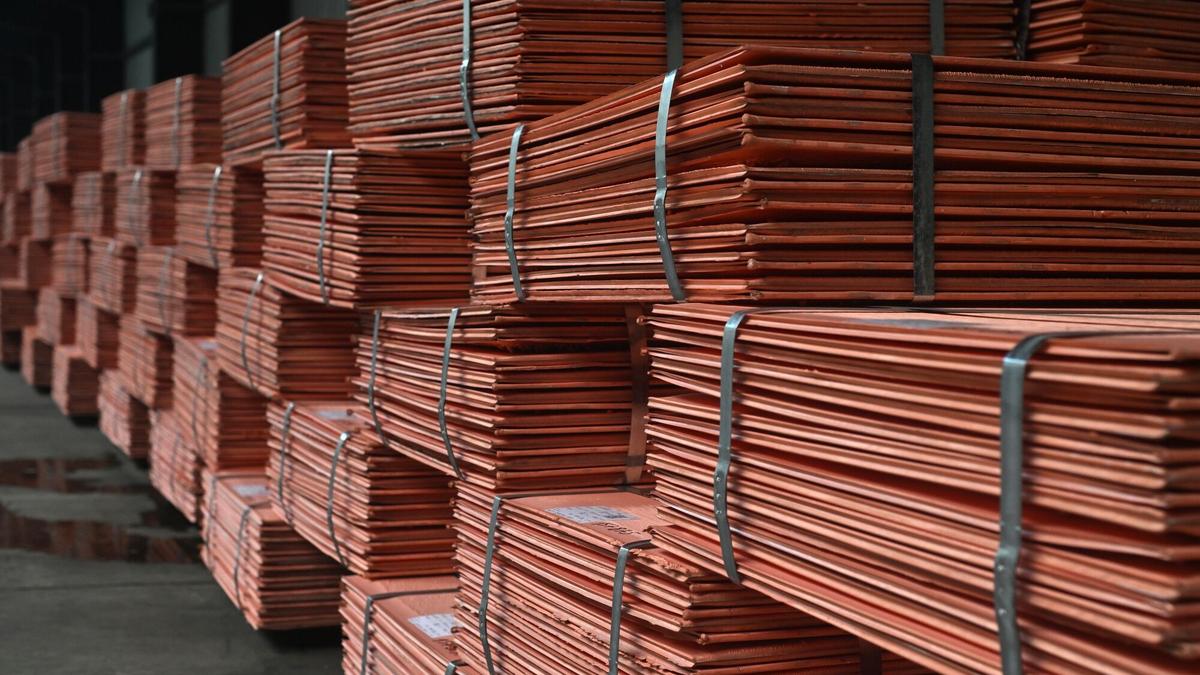India’s economic ambitions have never been clearer. From expanding renewable energy and electric mobility to positioning itself as a $30-trillion economy by 2047, the nation’s future rests heavily on a metal that powers the modern world—copper.
Yet despite holding around 163.9 million tonnes of copper reserves, India now imports more than 40 per cent of its copper needs.
Domestic production has crashed to barely 3–5 per cent of demand, creating a dangerous over-reliance on foreign suppliers at a time when control over minerals is increasingly shaping global geopolitics.
The closure of Sterlite Copper in 2018 was a major turning point. Until then, the plant contributed 36 per cent of India’s refined copper output. Its shutdown instantly turned India from a net exporter into a net importer. Copper imports surged to $10.33 billion in 2024, while exports fell to just $2.1 billion. Imports of copper concentrates doubled from ₹13,000 crore in FY19 to ₹26,000 crore in FY24, revealing the widening mismatch between India’s industrial growth and its refining capacity.
As India’s output fell, Pakistan quietly grew its presence in the copper export market. In 2023, Pakistan exported $772 million worth of copper products, with 91 per cent being refined or unwrought copper. Nearly 97 per cent of these exports—valued at $751 million—went to China. In just the first half of 2025, Pakistan shipped $482.41 million in copper articles to China, stepping into a space India vacated and strengthening its trade relevance in the region.
Set to expand with Reko Diq project
Pakistan’s copper output is set to expand dramatically with the development of the Reko Diq project in Balochistan, one of the world’s largest undeveloped copper-gold deposits. The venture is expected to begin production by 2028. Once operational, Reko Diq will produce and export copper concentrate on a massive scale, positioning Pakistan as a significant regional supplier of copper. The project is poised to deepen Pakistan’s trade links—particularly with China—and reshape South Asia’s mineral economy by turning the country into a major copper producer.
This shift is occurring at a time when minerals have become central to global power politics. The world is witnessing a resurgence of resource competition—now sharper than ever. The US–China rivalry offers the clearest example. Washington and Beijing are locked in a strategic battle over control of critical minerals essential for semiconductors, EVs, defence equipment, and clean-energy technologies. China holds overwhelming dominance in mineral processing—controlling more than 50 per cent of global copper refining and smelting capacity, as well as most of the world’s cobalt, rare-earths, and graphite supply chains. The United States, recognising its vulnerability, has begun reshoring supply chains, funding domestic mineral projects, and forming alliances with Australia, Japan, and India. Minerals are no longer just commodities—they are instruments of geopolitical leverage.
For India, whose copper demand is rising at a 7 per cent CAGR—far above the global average of 1.85 per cent—reliance on imports in such a geopolitical climate is risky. Copper is the backbone of India’s renewable-energy ambitions: a 3-MW wind turbine requires 4.7 tonnes of copper, and every megawatt of solar power needs 5.5 tonnes. With India targeting 500 GW of renewable capacity by 2030, secure access to copper is non-negotiable.
National strategic imperative
The electric-vehicle sector adds another layer of urgency. Conventional cars use 21.6 kg of copper; hybrid vehicles require 40 kg; fully electric cars need nearly 83.2 kg. Charging stations themselves consume significant copper—ranging from 0.7 kg to 7.65 kg depending on capacity. Meanwhile, India’s digital backbone—5G towers, semiconductor fabs, data centres, AI-computing facilities, and smart-city infrastructure—depends heavily on copper-based wiring, conduction systems, and cooling networks.
This is why the Sterlite Copper restart is no longer simply an industrial matter—it is a national-strategic imperative.
Before its closure, Sterlite Copper contributed ₹13,500 crore to government revenues between FY2014 and FY2018, supported 4,000 direct jobs and 20,000 indirect jobs, and accounted for nearly 3 per cent of Tamil Nadu’s GDP. The plant sustained an entire ecosystem—fertilizer, chemical, cement, electrical equipment, wire-drawing units, and emerging EV-component manufacturers. Even byproducts played a vital role: copper slag replaced 200,000 MT of river sand and 230,000 tonnes of iron ore in construction, reducing stress on natural resources.
The proposed “Green Restart” introduces a new generation of environmental safeguards. Using ISASMELT™ technology, double-conversion double-absorption systems with over 99.95 per cent efficiency, real-time emissions monitoring, Zero Liquid Discharge water recycling, and increased reliance on desalinated and municipal wastewater, the redesigned plant promises a far cleaner operation. A hybrid model—70% primary smelting and 30% recycled copper—will cut hazardous waste by 40 per cent, reduce carbon footprint by 34 per cent, and lower slag generation by 15 per cent.
A strategic necessity
At a time when the US and China are locked in a global competition for mineral dominance, India cannot afford to remain dependent on imported copper refined elsewhere—often in geopolitically sensitive hubs. Self-reliance in copper is no longer just an industrial objective; it is a strategic necessity for energy security, technological leadership, and national resilience.
India must decide whether it wants to control its own mineral destiny or remain vulnerable to foreign supply chains—some controlled by rivals, others influenced by regional competitors like Pakistan. Restarting Sterlite Copper is a crucial step toward rebuilding India’s strategic autonomy.
Copper will shape the future of India’s energy transition, digital infrastructure, and defence readiness. And securing that future begins in Thoothukudi.
(The author is an International Conservative Political Economic and Foreign Policy Expert.)
Published on November 22, 2025
